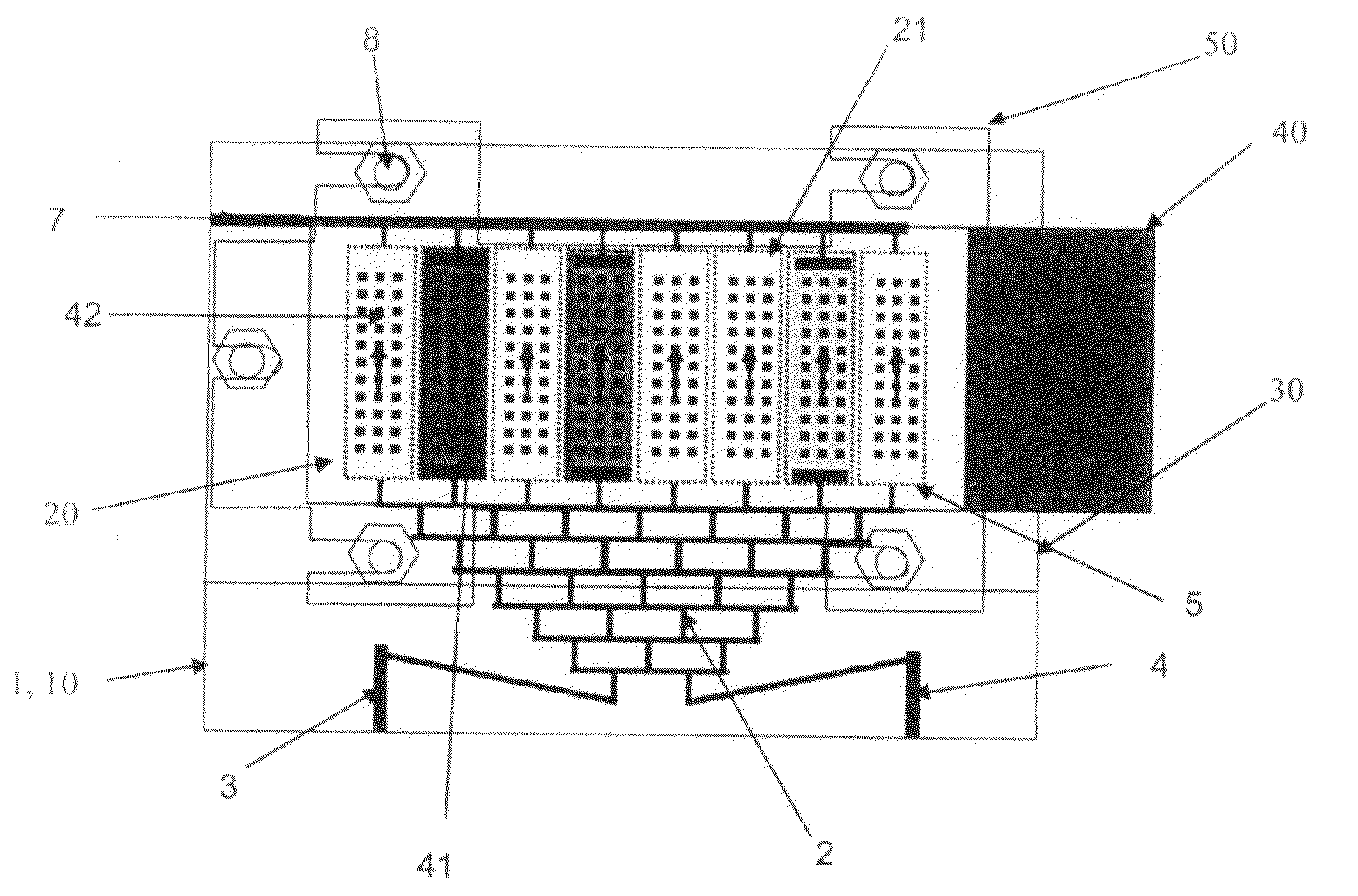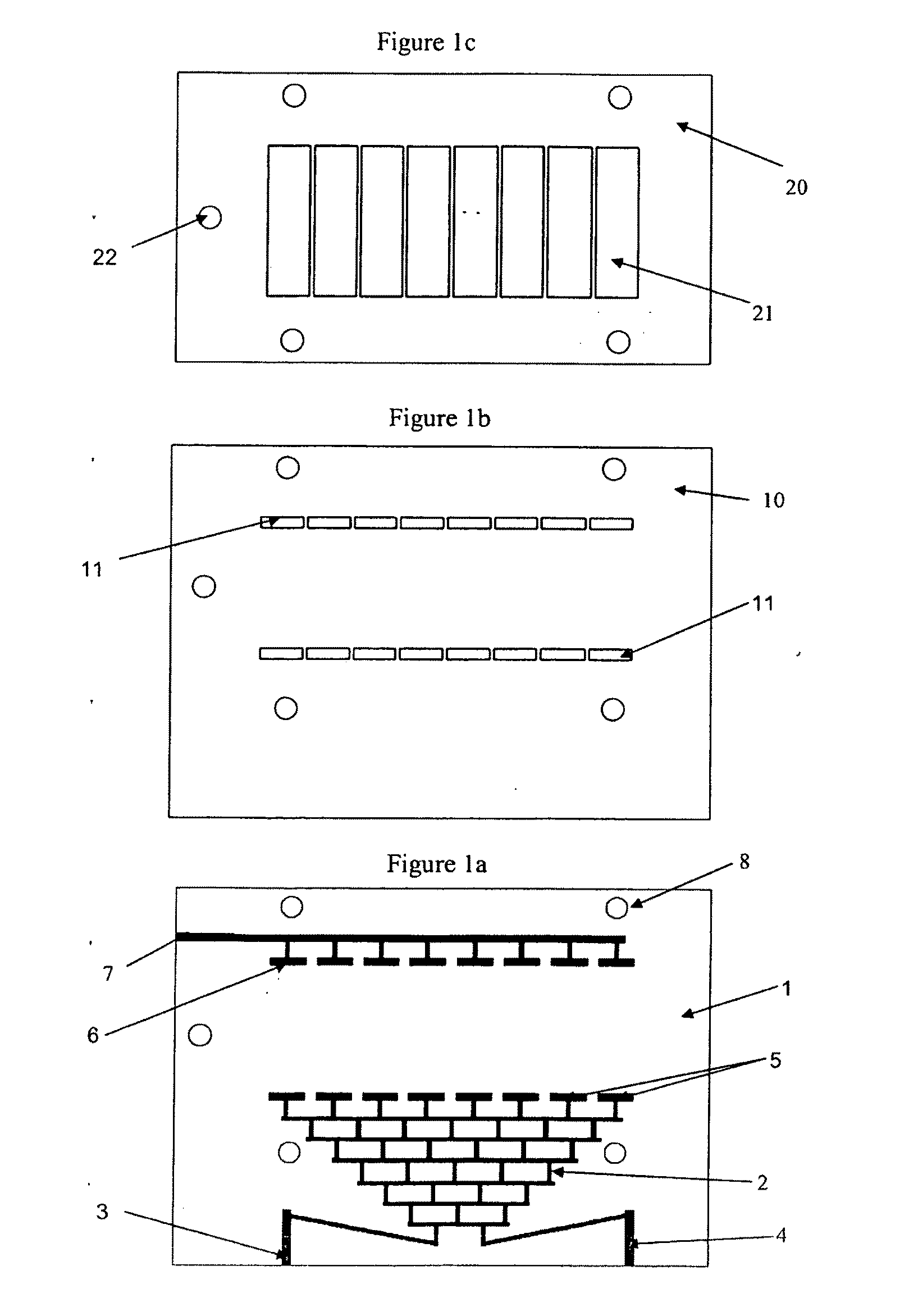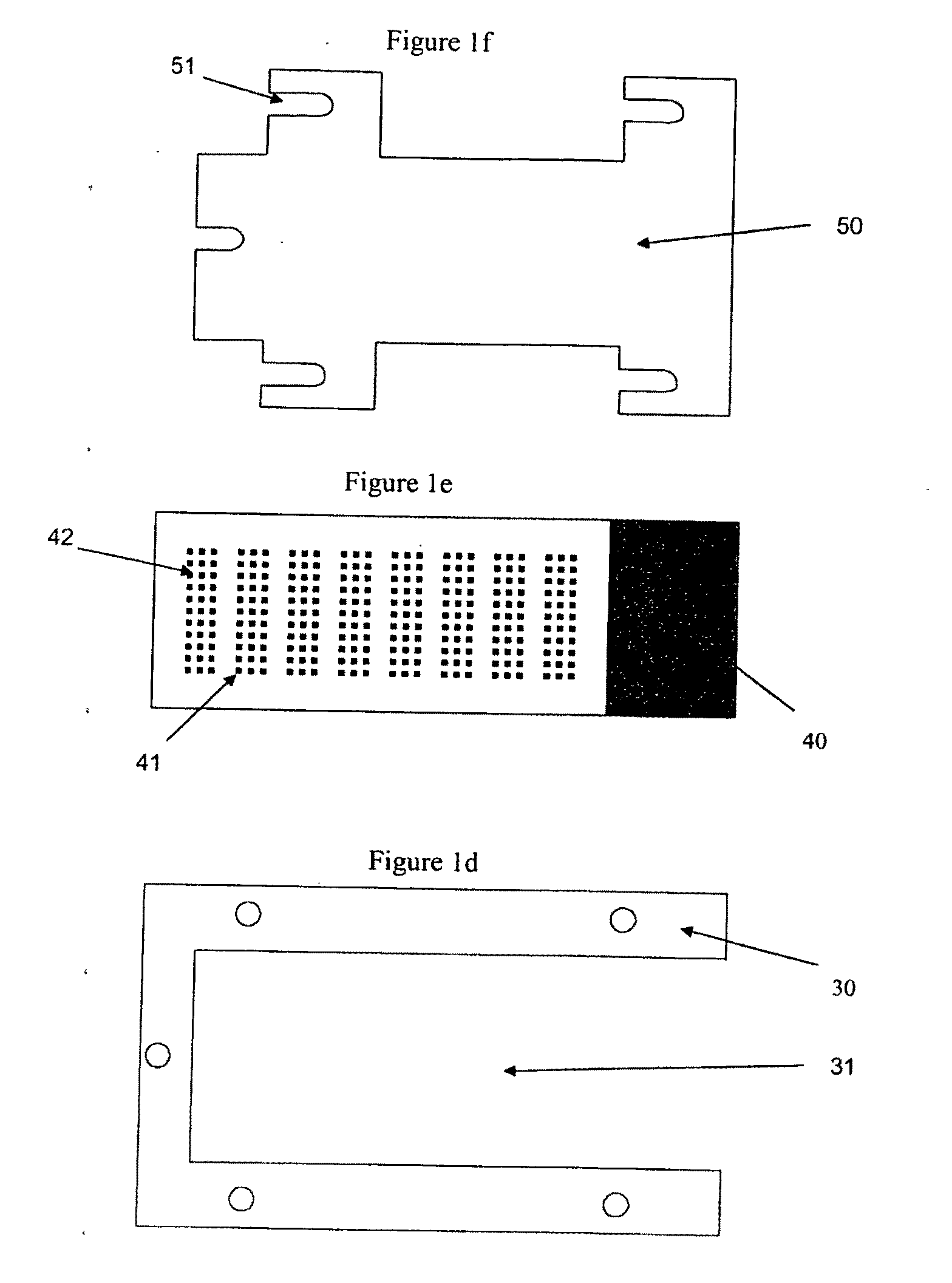Fluidics device for assay
a technology of assay and fluidics, which is applied in the field of assay and assay, can solve the problems of requiring extensive optimization, laborious determination of these conditions, and microarray- and microtiter plate-type technologies, and achieves the effects of easy compatibility, simple operation, and expansion of the dynamic range of colorimetric detection
- Summary
- Abstract
- Description
- Claims
- Application Information
AI Technical Summary
Benefits of technology
Problems solved by technology
Method used
Image
Examples
examples
[0179]PCR amplified DNA from the β-globin region was hybridised to microarrays of probes (table 1) designed to detect specific mutation in the β-globin gene. The length of the specific part of the probes is denoted in parenthesis. After hybridisation, the slide was mounted into the multithermal device and washed at different temperature as indicated in FIG. 13 using the device. The result shows that some probe pairs worked best at different temperatures (FIG. 16). For example good discrimination between wild type and mutant probe hybridisation was observed for CD27 / 28, CD15, CD17 at 22° C. while for example CD24(13) resulted in maximum discrimination at 30° C. and CD19(13) at 28° C. If genotyping was made at 22° C., the DNA would be considered to be heterozygote for many position (like CD27 / 28 and CD19) demonstrating the strength of using multiple conditions for genotyping. The results show also that if a single condition is preferable to use, 28° C. give satisfactory results for mo...
example 3
Effect on Assay Robustness Using Non Melting Temperature Matched Probes and a Gradient If Condition Over and Array.
[0191]The effects of the multi thermal chip was tested using a set of melting temperature (Tm) matched probes and a set of non- melting temperature matched shorter probes for mutation detection in the beta-globin gene. The Tm matched set of probes was designed using thermodynamic models. The probes included in this set varied in length between 15 nt and 21 n and had a theoretical Tm of 50° C. (Described in (Petersen, J., Stangegaard, M., Birgens, H. & Dufva, M. Detection of mutations in the beta-globin gene by colorimetric staining of DNA microarrays visualized by a flatbed scanner. Anal Biochem (2006)). A short probes set with non Tm matched probes was also constructed, where the only requirements was that the probes were as short as possible but still gave signals in hybridization reactions. These probes were mostly 12-17 nt long and had melting temperatures in the ra...
example 4
Using the Device as a Combined Hybridization and Washing Station.
[0192]The device can also be used for combining hybridization and subsequent multi stringency washing. There are several possibilities to combine hybridization with stringency wash. One option is simply to place the hybridization solution on the wells of the base and subsequently mount the DNA microarray support on the device. The DNA microarray is then exposed to the hybridization solution containing target. The hybridization temperature can be set for all chambers to be equal so that each chamber provides the same hybridization condition. After a given time, the gradient of temperature or chemicals can be created by starting the pumping systems. The target is flushed out and the microarray support is subsequently washed at different stringencies. The other possibility for combining hybridization and multistringency washing utilized the fluidics system to load the chambers with hybridization chambers after the DNA mic...
PUM
| Property | Measurement | Unit |
|---|---|---|
| area | aaaaa | aaaaa |
| volume | aaaaa | aaaaa |
| height | aaaaa | aaaaa |
Abstract
Description
Claims
Application Information
 Login to View More
Login to View More - R&D
- Intellectual Property
- Life Sciences
- Materials
- Tech Scout
- Unparalleled Data Quality
- Higher Quality Content
- 60% Fewer Hallucinations
Browse by: Latest US Patents, China's latest patents, Technical Efficacy Thesaurus, Application Domain, Technology Topic, Popular Technical Reports.
© 2025 PatSnap. All rights reserved.Legal|Privacy policy|Modern Slavery Act Transparency Statement|Sitemap|About US| Contact US: help@patsnap.com



